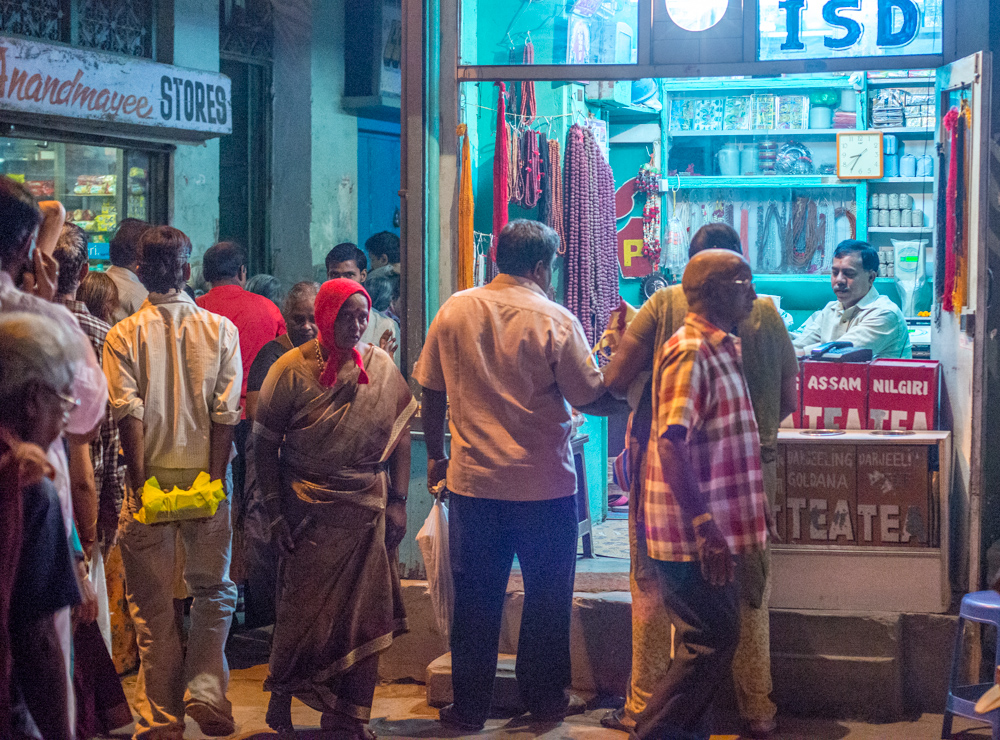If you think of India, and your British, one thing that will spring to mind is Tea. In particular, Darjeeling tea. We drink oceans of the stuff in Britain and just about everyone will have heard of Darjeeling tea. While in India, I went to a plantation, and spent a few nights in a home stay with the workers to find out what goes on and how tea is produced.
Lady working in tea plantation in India.
The growing and harvesting of tea is one of the few crops that still has to be done manually. The terrain is often tough and the plants are close together but it's the skill needed for picking that means it has be done by the human hand. It's tough work! Typical pay is 90 rupees per day (just under $2) with bonus for picking over 8kgs in a day. Besides picking, there are other jobs that have to be done year round like pruning which is done after the end of the picking season.
Men sharpen the knives used for pruning in the tea plantation. The grinding wheel is driven by pulling back and forth on a rope wrapped around a drive spindle.
Once the leaves are picked, they are carried to the local processing factory. Here they go through a process of drying, sorting, shredding and roasting before the final product is produced. The processes seem to be intricate and are borne out of many years of experience in making tea. On the Makaibari tea estate, where I was, they produce a variety of different teas that vary in quality and taste.
The shop foreman watches over the latest crop of finished tea.
The workers live in local villages that are part of the estate and it struck me that they didn't seem to have much room, as their neat and tidy houses all had small rooms. However, the living standards seem good compared to regional equivalents. There is no doubt the work is hard. I struggled to get up and down the plantation carrying my backpack and yet the ladies working the fields carried baskets supported with a strap around their foreheads. I tried it, much to the amusement of the other workers, and managed to carry the basket well enough but it was empty! I think if it was full, I would have just fallen over backwards.
Tea pickers of makaibari tea estate. The ladies were friendly and seemed to enjoy the diversion of being photographed, although they were initially shy to pose. This is the mother of the household that I spent three nights staying at. She was up at 5am and worked until past 8pm.
I also got to meet Mr Banerjee, the third generation owner of the estate. He's an amusing and eccentric character with an impeccable English Oxford accent. His conversation switched from tiger hunting, to global climate change, to the price of a hotel room in Paris, with barely a pause. I got the impression that he cared about his responsibility not just to the estate but to the welfare of the workers too.
Mr Banerjee, the owner of Makaibari estate.
The tea tasting, at the end of the factory tour, was a ritualised affair with lots of gentle sipping of various teas, followed by spitting out the sample in to a sink. Similar to wine tasting, it seems that this is the correct way to taste tea. Or maybe it just adds some drama to the event!
What's your favourite tea?
It's a wonderful experience and a fascinating insight in to an industry that is hundreds of years old. Little seems to have changed in that time. The area is also outstandingly beautiful and there is no better way to end the day than walking around the village and watching the sun set over the hills, followed by going home to a nice hot cup of sweet tea.
Amazing sunsets are not rare but this one was particularly special.
The makaibari home stay is fairly easy to reach. From Darjeeling take a share jeep that is going down to Siliguri and ask them to drop you at the factory. Make sure they don't drop you in Kurseong which is about 4kms short of where you need to be. Coming from Siliguri (or NJP) is a little more tricky as they might not want to take you or if they do, charge you the full rate for going to Darjeeling. Just insist and they will do it. The other option is private hire of a taxi which from either direction shouldn't cost much more than 500 rupees.
For more info on the estate and the home stay you can check out their website here.
If you go, why not check out the Toy Train that runs from Darjeeling to Ghum. The unique experience of riding a victorian steam train winding along Hill Cart Road, sometimes just a few feet from buildings, cars and people is just about as much fun as you can cram in to one afternoon.






























































